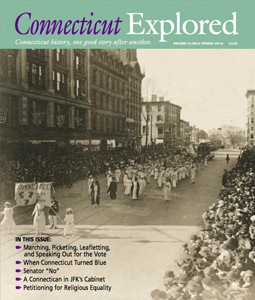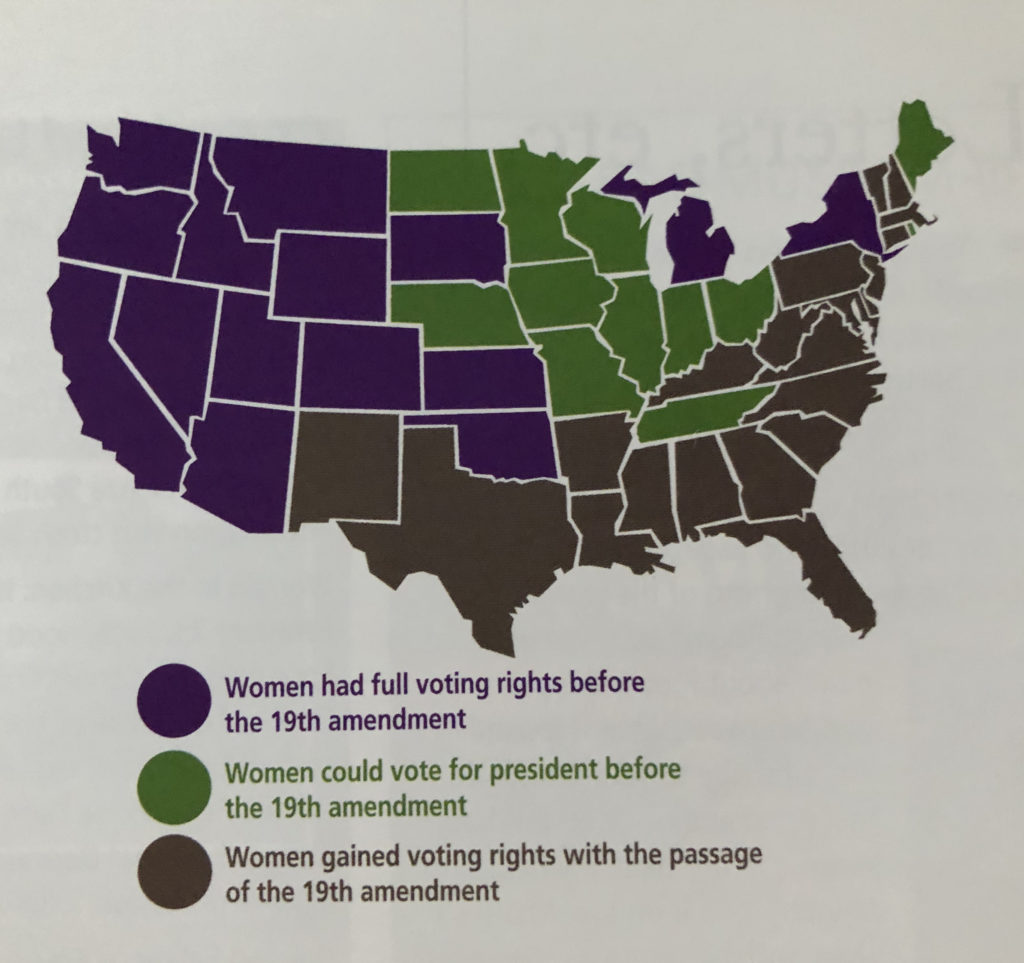by Elizabeth Normen
(c) Connecticut Explored Inc., Spring 2016
Subscribe/Buy the Issue!
 In this presidential election year, we decided to focus our spring issue on stories about voting rights and civic engagement. These stories remind us how hard-won our right to vote is. Often the story of women’s suffrage in this state focuses on the valiant efforts of Connecticut’s suffragists—while failing to tell us why the struggle was so difficult. The fact is that, contrary to our idea of Connecticut today as a “blue state,” Connecticut has rarely if ever been generous when it came to the right to vote.
In this presidential election year, we decided to focus our spring issue on stories about voting rights and civic engagement. These stories remind us how hard-won our right to vote is. Often the story of women’s suffrage in this state focuses on the valiant efforts of Connecticut’s suffragists—while failing to tell us why the struggle was so difficult. The fact is that, contrary to our idea of Connecticut today as a “blue state,” Connecticut has rarely if ever been generous when it came to the right to vote.
The state’s first constitution, in 1818, restricted voting to whites. This exclusion coincided with the decline of slavery in the state (where it was legal until 1848) and the resulting increase in the number—though still small—of free blacks who were potentially eligible to vote. [See “No Taxation Without Representation,” p. 20.] African American men did not get back that right until the passage of the 15th Amendment to the U.S. Constitution in 1870. The state legislature had the will to expand the franchise sooner, but a proposed state constitutional amendment was defeated in a public referendum in 1865.
Connecticut’s (white, male) voters were out of step with their New England neighbors. According to historian Steven Mintz (“Winning the Vote: A History of Voting Rights,” gilderlehrman.org), in 1855 New England’s five other states were the only ones in the nation that “allowed African Americans to vote without significant restrictions.” More in line with Connecticut was New York, which had enfranchised black men in its constitution in 1777 then all but eliminated that right in 1821 by adding a steep property requirement—at a time when states were eliminating property requirements for whites. New Jersey extended suffrage to women and blacks in its constitution of 1776, but in 1807 that radical experiment was rescinded. [See Jan Ellis Lewis, “Rethinking Women’s Suffrage in New Jersey: 1776 – 1807,” 2011, rutgerslawreview.com.]
Women were more likely to have the right to vote the farther west they lived. Women had been able to vote in western states and territories as early as 1869 (though that right was lost and re-won in several places). Voting rights for women spread eastward, with some north-central states, plus Rhode Island and Maine, allowing women to vote in presidential elections before 1920. New York was a step ahead, giving women the full right to vote in 1917. Connecticut and the other New England states would only do so after the 19th Amendment was ratified in 1920. Jessica Jenkins’s story on page 24 and Christopher Houck and Henry Cohn’s story on page 30 give us a window into what—and who—Connecticut’s suffragists were up against.
I suspect a high percentage of Connecticut Explored’s readers exercise their right of franchise. After reading this issue, I hope you will vote this fall with a renewed sense of the importance of participating in our democracy and will proudly wear your “I Voted!” sticker. I know I will.
For more stories about governance and politics in Connecticut, see Fall 2012 “Is This the Land of Steady Habits?,” Fall 2005 for a photo essay about suffrage, Aug/Sep/Oct 2004 “Politics and Power,” and Summer 2003 for stories about Mary Townsend Seymour and Maria Sanchez and their groundbreaking civic and political engagement. Visit ctexplored.org/back issues.
Thank You!
We are deeply grateful to our 2015 Friends of Connecticut Explored who made contributions above and beyond their membership/subscriptions last year. We’ve listed donors of $100 or more who made gifts through December 31, 2015 on page 55. Our Friends are our greatest boosters!

